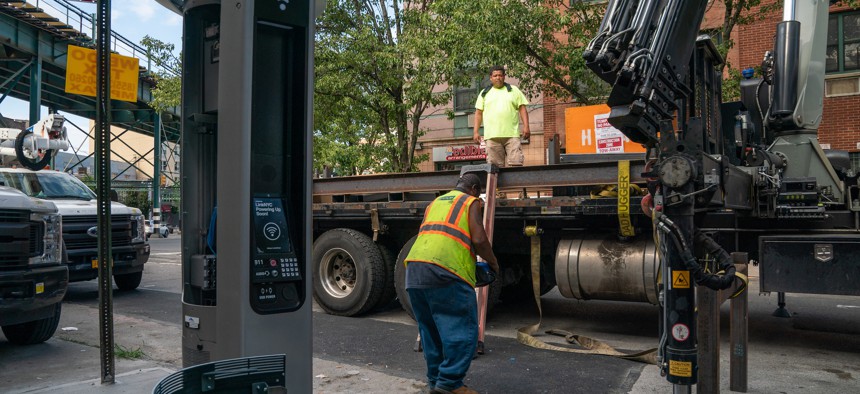Technology
Opinion: Closing the broadband adoption gap in New York
More than 97% of households in the state now have access to broadband, but many still can’t afford it.

Many families, despite having access to one or more internet service providers, are not taking advantage of the power of broadband. Specifically, income-constrained households struggle to get – and maintain – high-speed internet connections at their homes. David Dee Delgado/Getty Images
New York State is on the precipice of making an unprecedented investment to ensure that every household in the state has access to high-speed broadband. New York was recently awarded $664 million through the federal Broadband Equity, Access and Deployment program. This program is part of the federal government’s effort to bring high-speed broadband to all Americans. With this announcement, New York now has over $1.3 billion in available state and federal funding to help connect residents.
Much of this funding will be focused on connecting hard to reach locations with high-speed internet. We support the effort to deploy broadband networks to rural areas of the state that lack fast, reliable broadband service. In a parallel effort, we have been advocating for funding to address the gap in broadband adoption.
Studies undertaken by the state have highlighted that, while a small segment of New York state lacks broadband infrastructure, there is another far more pronounced broadband challenge that continues to leave many households disconnected. Many families, despite having access to one or more internet service providers, are not taking advantage of the power of broadband. Specifically, income-constrained households struggle to get – and maintain – high-speed internet connections at their homes. The barriers to broadband adoption include cost, digital literacy and other factors, but the result is the same – families are left out of the benefits that being connected brings.
This is not a small or isolated problem. The broadband adoption gap continues to persist in New York state despite the fact that over 97% of households, according to the New York state Public Service Commission, already have access to high-speed broadband. An estimated 1 million households throughout the state do not have home broadband despite having access to it. The adoption gap is even more pronounced among income-constrained New Yorkers with one in three low-income households lacking a broadband subscription, according to a 2021 state comptroller analysis of census data.
There are already efforts underway to close the broadband adoption gap. The City of New York has partnered with internet service providers to provide New York City Housing Authority residents with a free, baseline high-speed internet connection through Big Apple Connect – a program that is ensuring thousands of families get connected and more importantly, stay connected. This public-private partnership has connected over 100,000 households in less than 10 months.
Big Apple Connect built upon an earlier partnership between internet service providers and the City of New York to provide thousands of residents living in family shelters with free, high-speed broadband during the pandemic to allow students to participate in remote learning
New York state has also begun to recognize the importance of ensuring vulnerable populations have access to high-speed broadband. Since 2021, New York state has required all newly-constructed affordable housing properties to include a baseline broadband connection at no cost to the tenant. These efforts are bridging the broadband adoption gap and making a significant difference in these families’ everyday lives.
There is still more work to be done. As we have seen locally in areas such as Brooklyn, closing the digital divide requires a holistic approach using the synergy of government, community organizations and internet service providers to effectively get residents connected. The good news is that New York state has a significant amount of funding dedicated to this effort. The state and its broadband office, ConnectAll, should leverage the state and federal funds available to bridge the broadband adoption gap through proven, effective models that deliver high-speed internet directly to low-income New Yorkers.
Together, we have been building a coalition to advocate for expanding broadband adoption programs across the state. Along with our colleagues in the state Senate and Assembly, we recently authored letters to Gov. Kathy Hochul and the ConnectAll office urging them to invest a portion of these funds into broadband adoption programs. New York must seize the opportunity presented by the historic and unprecedented influx of federal broadband funds to address the digital divide in a meaningful way.
Brian Cunningham is a member of the Assembly representing portions of Flatbush, Prospect Lefferts Gardens and Crown Heights in Brooklyn. Kevin Parker is a member of the state Senate representing Flatbush, East Flatbush and Flatlands in Brooklyn. He is the chair of the Senate Energy and Telecommunications Committee.
NEXT STORY: Are nonprofits the permanent government of New York City?

